Phonics
At Coppetts Wood, we use FFT Success for All Phonics to teach phonics to children in Reception and Year 1.
Success for All Phonics is a Systematic Synthetic Phonics (SSP) Programme, designed to help your child develop essential reading and spelling skills. This structured approach introduces phonics, through fun activities and interactive materials, using systematic teaching methods to ensure that children learn to decode words confidently.
Through daily teaching, children will explore phonemes, graphemes and words in a way that makes learning enjoyable and memorable. Regular assessments allow teachers to keep track of your child's progress, helping to identify areas of strength and opportunities for growth.
Through the teaching of systematic phonics, children become confident and enthusiastic readers by the end of Key Stage One. Children can then focus on developing fluency and comprehension and learn to become confident readers and writers.
Phonics involves some technical terms which your child will learn and use:
| Phoneme |
The smallest unit of sound in a word is called a phoneme. If you say the word ‘cat’ slowly you can hear 3 phonemes or sounds: /c/ /a/ /t/. |
| Grapheme |
A phoneme written down is called a grapheme. For example, the letter (grapheme) ‘a’ represents the sound (phoneme) /a/. The word ‘cat’ has three graphemes: the letters ‘c’ ‘a’ ‘t’. A grapheme may have 1, 2 or 3 letters to make one sound, this is explained below. Some graphemes represent more than one phoneme. For example, ‘oo’ has two different phonemes (sounds) as in ‘book’ and ‘zoo’. |
| Digraph |
If a grapheme has 2 letters to make 1 sound, it is called a ‘digraph’. For example: ‘shut’ has 3 phonemes or sounds: /sh/ /u/ t/. Although there are 4 letters in the word ‘shut’, we say there are 3 graphemes because the letters that make /sh/ go together to make one sound. This is a digraph. The graphemes are ‘sh’ ‘u ‘t’. Once your child has learned all the single sounds (the alphabet letters), then they will begin to learn digraphs. |
| Split Digraph |
Split digraphs are digraphs where the grapheme is split up by a consonant. For example: ‘bake’ has 3 phonemes or sounds ‘b ‘a_e’ ‘k’. When your child writes the ‘a_e’ digraph, it is split because there is a ‘k’ between the ‘a’ and the ‘e’. Some other split digraphs are: ‘i_e’, ‘o_e’, e-e and ‘u_e’. They make one sound (phoneme) but are split when written. |
| Trigraph |
If a grapheme has 3 letters, it is called a trigraph. For example: ‘light’ has 3 phonemes or sounds /l/ /igh/ /t/. /igh/ is a trigraph. |
| Grapheme– Phoneme Correspondence (GPC) |
The relationship of the phoneme and the grapheme that represents it and vice versa. To see the grapheme ‘sh’ and know the sound that it will make. Or, to hear the sound /sh/ and know how to write the corresponding grapheme. |
Videos demonstrating the pronunciation of all Grapheme Phoneme Correspondences (GPCs)
If you would like to know more information about FFT or help with how to support your child with phonics at home, please visit their parent portal or read their Parent Guide.





